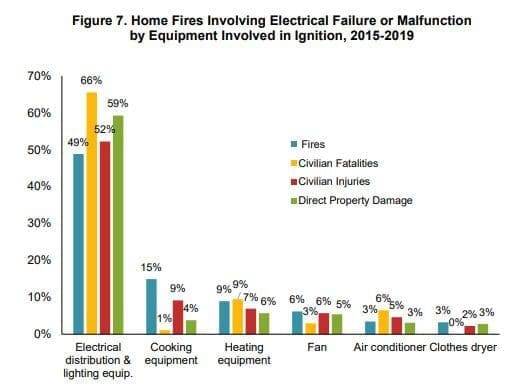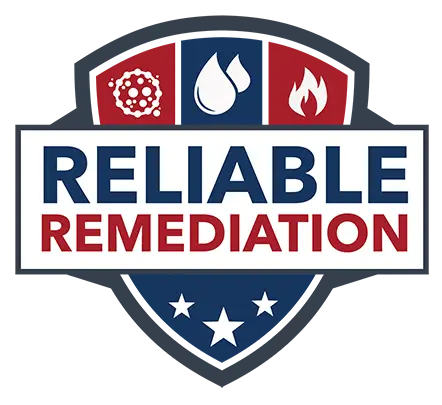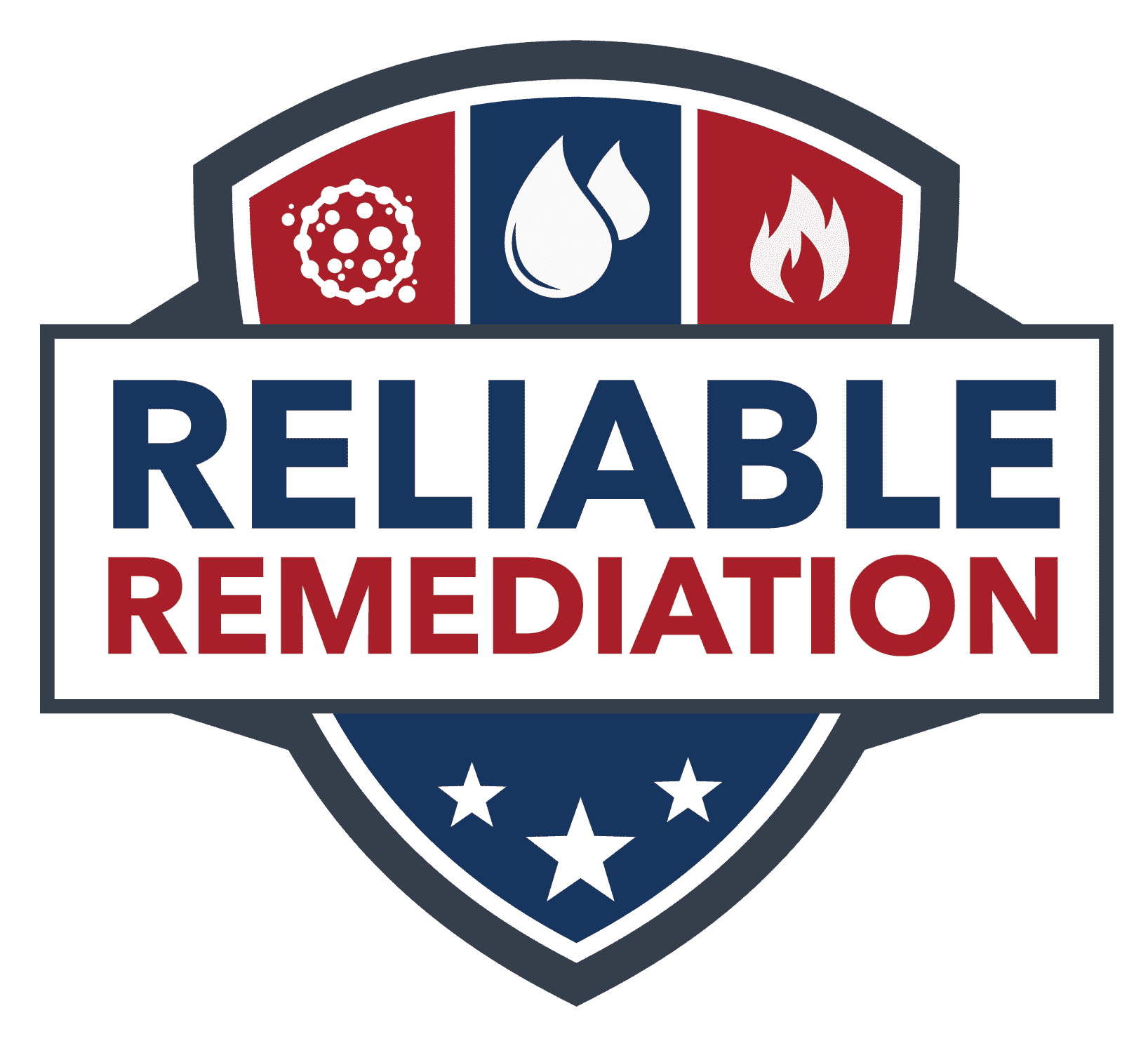Fire/Smoke Mitigation Cost
How Much Does Fire/Smoke Damage Repair Cost?
Fire & Smoke Mitigation Pricing
The cost of fire mitigation is affected by a number of factors and variables.
Living Room Fireplace & Heating equipment fires
Average Cost:
$2,355 to $36,840
Attic – Electrical Failure & Heating Malfunctions
Average Cost:
$4,115 to $46,225
How Much Does Water Fire / Smoke Mitigation Cost?
The Cost of Fire Mitigation is Affected by a Number of Factors and Variables.
Fire and smoke mitigation can cost anywhere from a few thousand dollars to tens of thousands of dollars. Even a small fire may require professional assistance due to the health and safety risks associated with fire, smoke, and chemicals associated with these losses. Every situation is different, every building is different, and it’s hard to pinpoint an exact price.
We’ll try to provide you with a general price range and list the factors and variables that impact the cost.
Primary Factors that Affect the Cost of Fire / Smoke Mitigation
Type of Fire
Simple fires burn pure fuels such as dry grass and wood; they usually occur outside of the home. Complex fires produce large amounts of soot and smoke from a variety of items and contents made with rubber and plastics found throughout homes. Where did the fire occur and did it affect structural members of the building? What was the source? How far did smoke from the fire migrate and did it permeate unseen areas like cavities in walls and between floors?
Fire Details (fuel source, oxygen present, temperature)
Fuel
Different materials (or combinations of materials) burned will sometimes create different residues in the same structure – requiring different cleaning processes.
Oxygen
If a fire is oxygen-rich, it consumes more fuel. This results in drier and finer soot particles and is generally easier to clean. Oxygen-starved fires often smolder, creating heavier, more penetrating and stickier residues.
Temperature
How hot the fire burns will affect thermal extraction and contraction. Hotter fires open the pores of materials – driving soot (and odor) directly into materials. Expansion also drives smoke and odor into closed areas (like wall cavities, dresser drawers, and cabinetry). Thermal contraction occurs after cooling – the pores of the materials close and “seal” the soot and odor into the affected materials.
Materials and Items Affected
Soft goods (textiles like clothing, bedding, and carpets), electronics, furniture, etc. can usually be cleaned and deodorized when affected by smoke and soot. If they are going to be cleaned and salvaged, it is best to move quickly.
Extinguishing Method
Water is the most common tool used to extinguish fires, but water damage is a serious concern after a fire. If the property is not dried quickly, mold and additional structural damage will likely result. Using a fire extinguisher is a great way to put out a small fire quickly – before it gets out of hand. But cleaning up the residues from fire extinguishers can get complicated as well. Dry chemical fire extinguishers are very corrosive to metal surfaces.
Company
Fire and smoke mitigation carry with them several health and safety concerns that should not be left to the novice or untrained. A general contractor might have a lower price than a professional fire mitigation company. They also may not carry the appropriate insurance coverages or have specialized training and certifications from reputable organizations like the National Organization of Remediators and Mold Inspectors, NORMI or the Institute of Inspection, Cleaning and Restoration Certification, IICRC.
We will explore common types of fires or events:
- Kitchen Cooking Fires
- Basement - Puff Back
- Bedroom - Electrical Fire
- Living Room - Fireplaces and Heating Equipment
- Attic - Electrical Failures and Heating Malfunctions
Kitchen Fire/Smoke Mitigation – Cooking Fires
Average Cost for Kitchen Fire Mitigation
Minimal Damage – $1,785 to $5,600
Extensive Damage – $9,585 to $28,225
Cooking fires are the leading cause of home fires by far, accounting for 48% of all reported residential fires. It is also the leading cause of home fire injuries and the second-leading cause of home fire deaths, according to the National Fire Protection Association’s (NFPA) Home Structure Fires 2019 Report.
Common Causes of Fire Damage in Kitchens
- Unattended food on the stove or in the oven;
- Pan frying and deep frying oil allowed to overheat;
- Toaster ovens, toasters, and microwave ovens left unattended during use; and,
- Appliance malfunctions.
Variables That Affect the Cost of Fire and Smoke Damage in Kitchens
Costs will vary depending on the extent and type of damage – if a fire was contained to a pot on the stove or just in the oven, most of the damage (aside from the stove itself) will be from smoke and how far it traveled. Can it be cleaned, will it need to be resurfaced, or does it need to be replaced?
Common Issues with Kitchen Fires
- Protein and grease fires are the most common and both require different techniques for cleaning and deodorizing. Have soft goods been affected? How far did the smoke travel (probably farther than you might think)? Did smoke travel into a wall or ceiling cavity?
- How much material needs to be removed? Are cabinets and countertops affected? Are there safety hazards? Did anything plastic burn (burnt plastics produce toxic smoke and soot)?
- Depending on how long the soot has been in contact with materials will also determine what can be cleaned and what may need to be resurfaced. What is the value of items affected? If things have burned, can only that be replaced or does the set have to be replaced to return the home to pre-loss condition? Example: One cabinet burned, but it can not be replaced with one that matches – all cabinets may need to be replaced.
- Was water used? Did the fire department have to spray things down? Is there residual water damage? Was a chemical fire extinguisher used?
Pro Tips for Preventing Kitchen Fires
- Keep your kitchen clean and tidy. A clean kitchen will prevent the build-up of grease and other flammable materials that can cause fires.
- Watch what you’re cooking. Never leave your stove unattended while cooking. If you have to leave, turn off the heat or remove the pan from the heat.
- Keep flammable materials such as towels, curtains, and oven mitts away from the stove and other heat sources.
- Keep a fire extinguisher handy in your kitchen, and know how to use it in case of a fire.
- Turn off appliances when not in use. Unplug small appliances like toasters and coffee makers when they are not in use.
Basement – Puff Back
Average Cost for Puff Back Mitigation
Minimal Damage – $1,425 to $3,100
Extensive Damage – $4,860 to $23,490
A puff back occurs when your oil burner backfires and shoots smoke and soot into your home or business. Puff backs can cause anything from minor inconvenience to severe damage to your property and heating system. Puff backs can occur in oil or gas furnaces, boilers, or water heaters.
Common Cause of Puff Backs
- If a boiler or heater is not running properly, unburned fuel may accumulate in its combustion chamber. Upon starting the heating appliance, this oil can ignite and cause a small explosion or misfire inside the furnace.
Variables That Affect the Cost of Puff Backs in Basements and Structures
Costs will vary depending on the extent and type of damage – Do you have an HVAC system that has spread the smoke throughout the structure? How quickly was the issue discovered? Was the smoke contained to where the air handler is located? Was the smoke cleared before it had time to settle? How long has the smoke settled on building materials and soft goods?
Common Issues with Puff Backs
- Smoke and soot from petroleum-based sources tend to be oily, and heavy, and require special chemicals and techniques for proper cleaning.
- Soot from a puff back also contains oil, improper cleaning may smear soot into walls and furniture. Puff backs can also produce a foul odor you may not be able to eradicate on your own.
- The smoke and soot damage is already due to incomplete combustion. Have your system cleaned and have regular maintenance performed – prior to restarting.
Pro Tips for Preventing Puff Backs
- Schedule annual furnace maintenance. Furnace maintenance should be done by a licensed professional at least once a year. They will check for potential issues and ensure that your furnace is running safely and efficiently.
- Use high-quality fuel oil. Low-quality fuel oil can cause a buildup of soot and carbon in the furnace. Make sure to use a reputable supplier that provides high-quality fuel oil.
- Install a chimney cap. A chimney cap can prevent debris, animals, and rainwater from entering the chimney, reducing the risk of blockages that can lead to a puff back.
- Install a draft regulator. A draft regulator can help regulate the airflow in the furnace and reduce the risk of puff backs.
- Upgrade to a newer furnace. If your furnace is old and outdated, consider upgrading to a newer, more efficient model that is less prone to puff backs.
Immediately after a puff back occurs, shut off the heating system to prevent further damage. If there is a risk of fire or a large amount of smoke, evacuate the building. If your carbon monoxide detector goes off, evacuate and call emergency services.
Bedroom – Electrical Fires
Average Cost for Electrical Fire Mitigation
Minimal Damage – $1,625 to $3,980
Extensive Damage – $4,220 to $26,715
Electrical fires are the third leading cause of fires in the United States and the number one cause of direct property damage (an estimated $1.5 billion per year), according to the National Fire Protection Association’s (NFPA) Home Fires Caused by Electrical Failure or Malfunction.
Common Causes of Electrical Fires
- Faulty electrical outlets and appliances. Electrical fires can be caused by faulty electrical outlets and appliances. This can include loose connections, frayed wires, and damaged cords.
- Overloading a circuit can cause the wires to overheat and start a fire. This can happen when too many appliances are plugged into one outlet or power strip.
- Light fixtures and bulbs can also be a source of electrical fires. Using a bulb with a wattage that is too high for the fixture or leaving a bulb on for too long can cause the fixture to overheat and start a fire.
- Outdated electrical systems can also be a fire hazard. Homes with outdated electrical systems may not have the capacity to handle modern appliances and electronics.

Variables That Affect the Cost of Electrical Fires
Was there an electrical short? Did arcing cause damage inside walls and ceiling cavities? Even if most damages occurred in plain view, an investigation will need to be done on the entire electrical system – including wiring, switches, and the electrical panel.
Common Issues with Electrical Fires
- Home fires involving electrical failure or malfunction were most likely to occur in the cold weather months of January, February, and December, which accounted for three in ten fires (30%).
- It is likely that home fires are more prevalent in winter months due to the increased use of space heaters and blankets, or flammable objects being left against electrical baseboard heating units. Greater use of electrical stoves or ranges or the use of holiday lighting on already taxed electrical circuits could also play a role.
Pro Tips for Preventing Electrical Fires
- Regularly inspect electrical cords and appliances. Check electrical cords and appliances for frayed wires, cracked insulation, and other signs of damage. Replace any damaged cords or appliances immediately.
- Don’t overload outlets. Avoid plugging too many appliances into one outlet or power strip. This can overload the circuit and cause a fire.
- Use surge protectors to protect appliances from power surges. This will help prevent damage to the appliance and reduce the risk of an electrical fire.
- Make sure to use light bulbs with the correct wattage for the fixture. Using a higher-wattage bulb than recommended can cause the fixture to overheat and start a fire.
- If you need electrical work done in your home, hire a licensed electrician to do the job. This will ensure that the work is done safely and up to code.
- Turn off appliances when not in use. Turn off appliances when they are not in use, and unplug them if possible. This will reduce the risk of a fire caused by a malfunctioning appliance.
Living Room – Fireplace and Heating Equipment Fires
Average Cost for Fireplace and Equipment
Minimal Damage – $2,355 to $4,160
Extensive Damage – $5,165 to $36,840
Home fires caused by heating equipment most often involved space heaters, which accounted for just over two in five fires, as well as four in five deaths and injuries and more than half of the direct property damage. Fireplaces or chimneys, responsible for approximately three in ten fires caused by heating equipment, were the second leading cause of home heating equipment fires.
Common Causes of Fireplace and Space Heater Fires
- Creosote buildup – creosote is a flammable substance that can build up in the chimney and flue over time. If the creosote ignites, it can cause a chimney fire.
- Improper use of the fireplace. Many fires occur because people don’t know how to use their fireplaces correctly. For example, using too much wood, burning paper or trash in the fireplace, or leaving the damper closed can all lead to fires.
- Lack of maintenance. Fireplaces and chimneys need regular cleaning and maintenance to prevent fires. If debris such as leaves, branches, or animal nests accumulate in the chimney, they can ignite and start a fire.
- Damaged chimney or flue. If the chimney or flue is damaged, it can create a fire hazard. Cracks in the chimney or flue can allow heat and spark to escape and ignite surrounding materials.
- Space heaters can ignite curtains, furniture, bedding, or other combustible items if they are placed too close.
- Leaving a space heater or a fireplace unattended is a significant fire hazard, especially if it is in a room where there are flammable materials.
- Lack of maintenance. If a space heater is not maintained correctly, dust, dirt, and other debris can accumulate in the heating element, causing it to overheat and catch fire.
Variables That Affect the Cost of Fireplace and Heating Equipment Fires
Is there structural damage? Chimneys often run the full height of the structure and damage can occur quickly and damage to structural components is possible. For this reason, restoration after a fire can be costly. If the fire was too large to contain and the fire department extinguished the fire – water damage will also have to be addressed quickly. Drying out the structure will reduce the chance that your disaster will become a mold-contaminated mess.
Common Issues with Fireplace and Heating Equipment Fires
- The cleanup process may involve removing debris, ash, and soot from the firebox, chimney, and surrounding areas. Carpets, furniture, and other items may need to be cleaned or replaced.
- If the fire caused damage to the structure of the home, repairs may be needed to the walls, ceiling, and roof. In some cases, the chimney may need to be rebuilt or repaired.
Pro Tips for Preventing Fireplace and Heating Equipment Fires
- Use a sturdy screen or glass doors to keep sparks and embers from escaping the fireplace.
- Have your fireplace and chimney inspected and cleaned annually by a professional chimney sweep.
- Only burn dry, well-seasoned wood in the fireplace. Avoid using green or damp wood, as it can cause excessive creosote buildup in the chimney.
- Never leave a fire or heater unattended, and make sure it is completely extinguished before leaving the room or going to bed.
- Do not overload the fireplace with too much wood or other fuel.
- Have heating equipment inspected and maintained regularly by a qualified technician.
- Keep heating equipment clean and free of debris, dust, and other combustible materials.
- Use heating equipment that has been certified by a recognized testing laboratory.
- Install smoke detectors and carbon monoxide detectors near the fireplace and in all sleeping areas.
Attic – Electrical Failures and Heating Malfunctions
Average Cost for Attic Fires
Minimal Damage – $4,115 to $7,130
Extensive Damage – $8,160 to $46,225
Fire damage in the attic could be costly. Ensuring structural soundness is extremely important in order to protect the rest of the house from collapse.
Common Causes of Attic Fires
- Electrical malfunctions. Electrical problems such as overloaded circuits, frayed wires, and faulty appliances can cause sparks, leading to a fire.
- Heating systems. Attic fires can also be caused by malfunctioning heating systems, including chimneys, furnaces, and space heaters.
- Combustible materials. Attics are often used for storage and may contain flammable materials such as clothing, paper, and boxes, which can catch fire if exposed to a heat source.
- Lightning strikes can cause attic fires by igniting roof shingles or electrical wiring.
- Insulation made from combustible materials, such as cellulose or fiberglass, can catch fire if exposed to heat or flames.
Variables That Affect the Cost of Attic Fires
Structural damage may be the number one concern with fires originating in the attic. Not only are there a lot of structural materials helping keep the building together found in the attic, but holes may have been cut in the roof to gain access and/or extinguish the fire. If water was used, it will find its way down through walls, ceilings, and the rest of the structure causing secondary water damage.
Common Issues with Attic Fires
- Structural damage.
- Attics are not commonly used as occupied spaces and, as a result, they usually do not have smoke alarms or heat sensors – this often allows for more damage to take place before discovery and extinguishing the fire.
- When a fire occurs in an attic, it is common that it will go unnoticed until smoke or flames, escaping from the roof, is visible from the outside – this tends to lead to a greater amount of damage.
- Extensive water damage throughout the rest of the structure
Pro Tips for Preventing Attic Fires
- Schedule regular inspections of your attic’s electrical wiring, heating systems, and appliances to ensure that they are functioning correctly and not posing any fire risks.
- Store flammable materials, such as paper, cardboard, and chemicals, in a safe and secure location outside the attic. Avoid storing gasoline, propane tanks, and other hazardous materials in the attic.
- Proper ventilation in the attic is essential to prevent the buildup of heat and moisture, which can increase the risk of fire. Make sure your attic has adequate ventilation and that vents are not blocked by insulation or other objects.
- Install smoke detectors in the attic and make sure they are in good working order. Test them regularly and replace batteries as needed.
- Consider installing a lightning protection system to reduce the risk of lightning strikes causing a fire.
It’s Easy to Get the Help You Need

Get an Evaluation

Receive a Customized Plan


